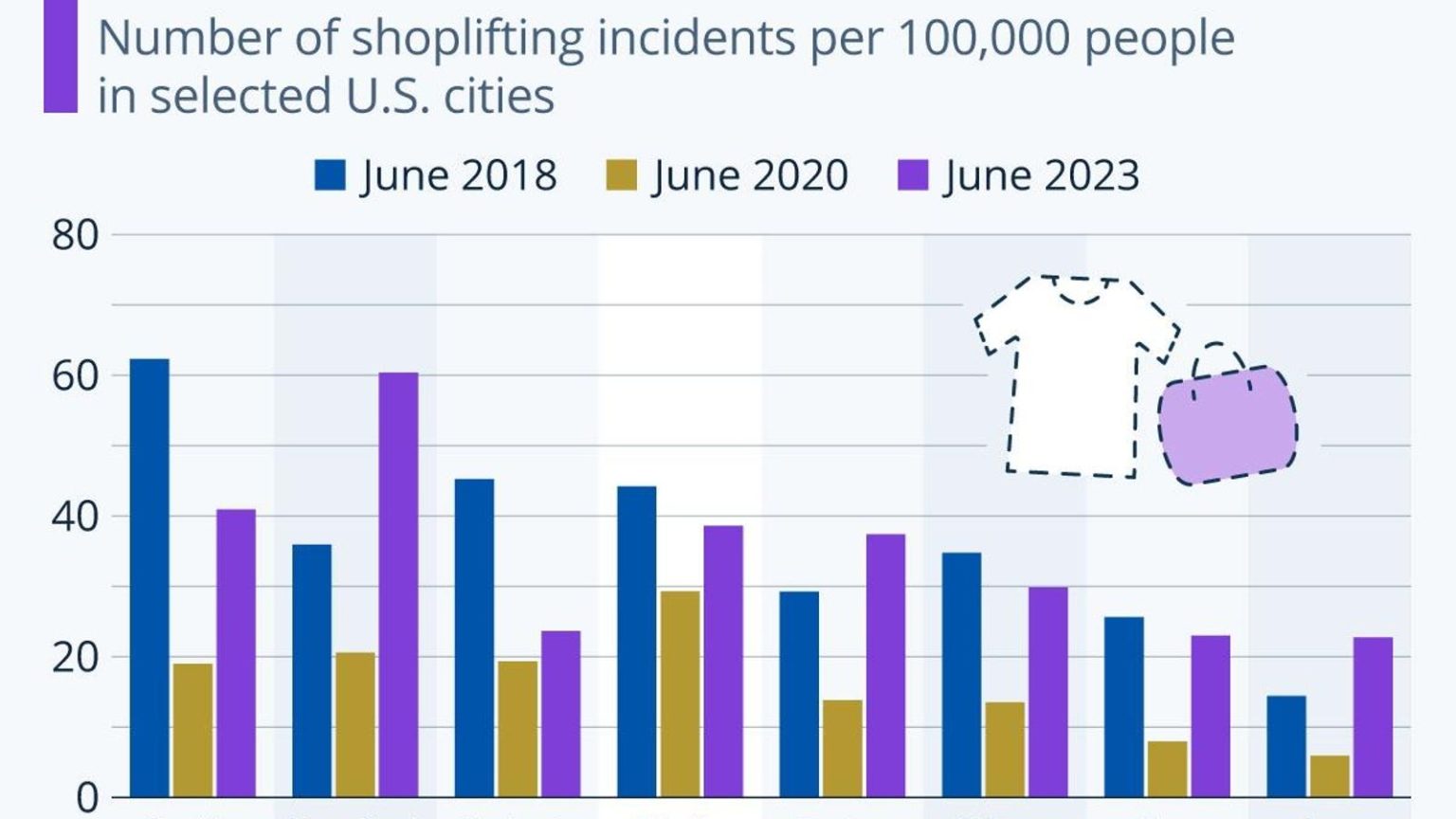Despite worry about rampant retail theft in the United States, a 24-city sample analyzed by think tank Council on Criminal Justice shows that the current shoplifting prevalence actually remains below pre-pandemic levels of 2018 and 2019. However, the sample also shows a resurgence of retail theft in 2023 from pandemic lows.
Furthermore, some cities are diverging from the average and have seen major spikes of shoplifting in 2023. New York City in particular is affected by this. Having counted around 36 incidents of retail theft per 100,000 people in June of 2018 (and comparable rates in other pre-pandemic months in 2018/19), shoplifting incidents reached a high of 69 per 100,000 New Yorkers in August of last year and remained at a very elevated 60 per 100,000 as of June 2023.
Cities which have seen similar developments, according to the data, are Boston and Los Angeles—albeit on lower levels of between 20 and 40 incidents per 100,000 inhabitants in June as of the latest data, up from between 15 and 30 per 100,000 in mid-2018. While Los Angeles’ rates are undeniably up, Boston’s had also fluctuated quite a bit before Covid-19 hit. Notable decreases from pre-pandemic shoplifting prevalence happened in Seattle and St. Louis.
The makers of the report find that there have been no geographic patterns to whether a city’s rate was up or down post-pandemic. They also point out that the overall shoplifting trend in the city sample follows the same patterns as developments in the larger larceny-theft category. Burglary and robbery also dipped in these locales (and the country overall) during Covid-19 and have not returned fully to pre-pandemic levels. The exception is vehicle theft, which has decoupled from the greater larceny-theft trend and has skyrocketed—something that the FBI also points out in its recent annual crime report.
Are thieves more organized, violent, successful?
News of organized retail theft, sometimes called smash and grab incidents, have continued to be reported from different parts of the country, receiving much attention from the public as well as from policymakers. At least until 2021, the share of shoplifting incidents involving more than two people remained at less than 5%, while crimes with more than six participants made up just 0.1% of the total, according to data analyzed by CCJ. Likewise, shoplifting incidents involving assault or another additional crime constituted less than 2% of all cases in 2021 despite being up 9% since 2019.
The value of goods stolen per shoplifting incident is estimated to be up, however. The median loss per theft stood at around $75 in 2019, while that number was roughly $100 in 2021. A steep increase of shoplifting incidents classified as felonies on the basis of the value of stolen goods in a five-city sample suggests that the trend of stealing higher-valued items might have continued after 2021.
While retailers have recently said that theft is hurting their bottom lines, some observers believe they actually have bigger problems and are just hopping the bandwagon of retail theft being in the headlines. On the other hand, the fact that many shoplifters aren’t caught means that the crime is generally believed to be underreported. Finally, retailers’ and officials’ measures against retail theft could also be taking hold, reining in a problem that would otherwise be bigger.
—
Charted by Statista
Read the full article here





